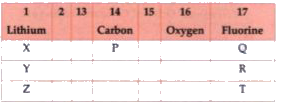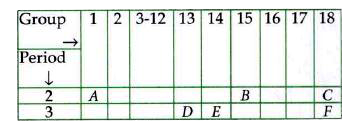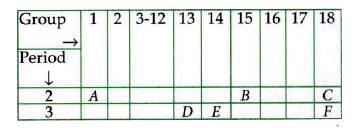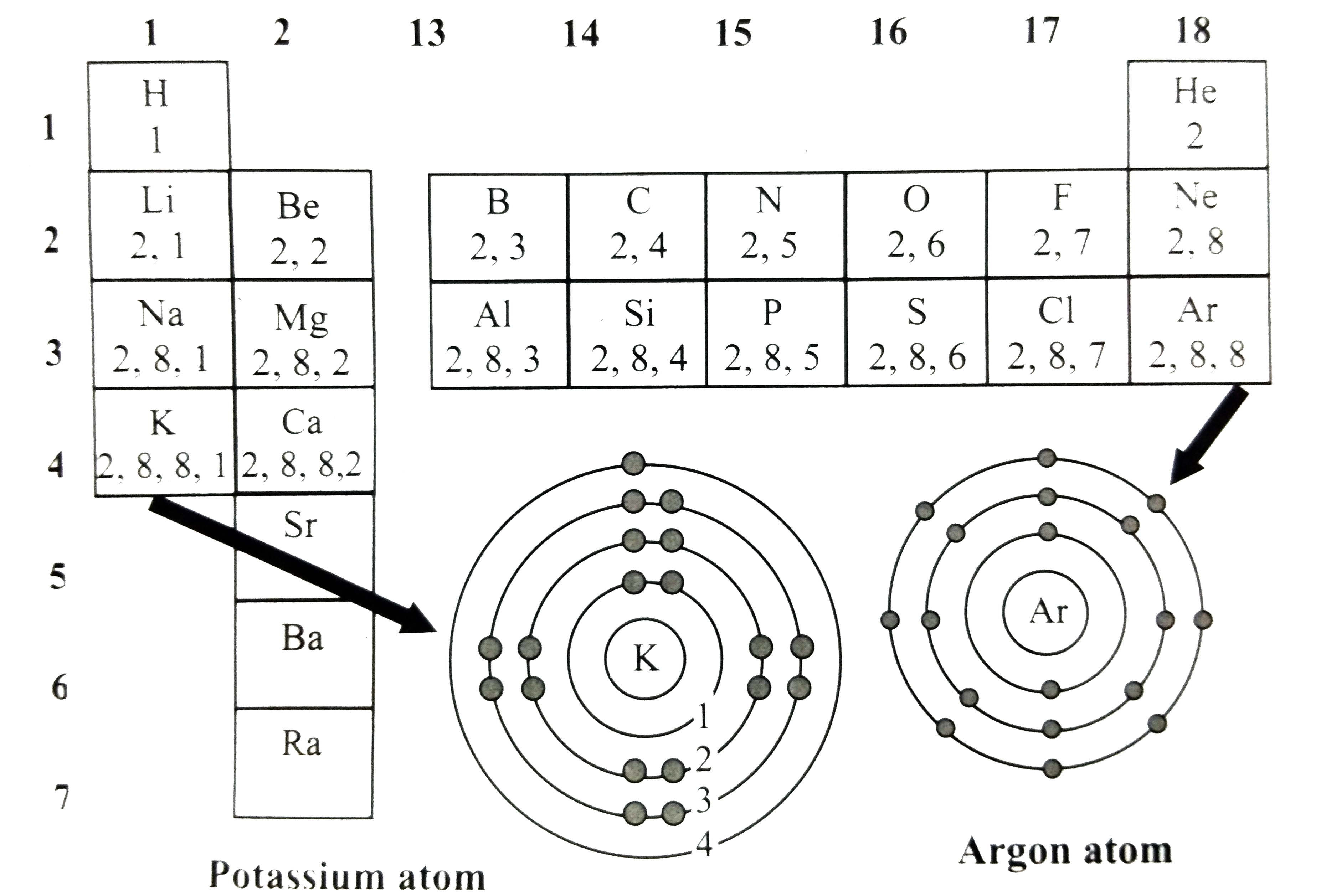From the following part of the periodic table, answer the following questions :

Name one element each of group 2 and 15.
Step by step video & image solution for From the following part of the periodic table, answer the following questions : Name one element each of group 2 and 15. by Chemistry experts to help you in doubts & scoring excellent marks in Class 10 exams.
Related Playlists
- BOOK - OSWAL PUBLICATIONCHAPTER - PERIODIC CLASSIFICATION OF ELEMENTS EXERCISE - NCERT CORNER (INTEXT CORNER)16videos
PERIODIC CLASSIFICATION OF ELEMENTS
- BOOK - OSWAL PUBLICATIONCHAPTER - PERIODIC CLASSIFICATION OF ELEMENTS EXERCISE - NCERT CORNER (EXERCISE QUESTIONS)19videos
PERIODIC CLASSIFICATION OF ELEMENTS
- BOOK - OSWAL PUBLICATIONCHAPTER - PERIODIC CLASSIFICATION OF ELEMENTS EXERCISE - SELF - ASSESSMENT - 1 ( OBJECTIVE TYPE QUESTIONS)13videos
PERIODIC CLASSIFICATION OF ELEMENTS
- BOOK - OSWAL PUBLICATIONCHAPTER - OLYMPIAD 2019 - 20EXERCISE - CHEMISTRY QUESTIONS (Is Matter Around us Pure)1videos
OLYMPIAD 2019 - 20
Similar Questions
From the part of the periodic table given, answer the following questions.

(a) Which is the most reactive metal ? (b) Name the family of L, Q, R, T.
(c) Name one element of group 2 and 15, (d) Name one member of group 18 other than neon. (e) Give the name of the element S placed below carbon in group 14.View SolutionStudy the following table in which positions of six elements A, B, C, D, E and F are shown as they are in the modern periodic table

On the basis of the above table, answer the following questions
Name the element which forms only covalent compoundsView SolutionStudy the following table in which positions of six elements A, B, C, D, E and F are shown as they are in the modern periodic table

On the basis of the above table, answer the following questions
Name the element which is a metal with valency threeView SolutionStudy the following table in which positions of six elements A, B, C, D, E and F are shown as they are in the modern periodic table

On the basis of the above table, answer the following questions
Name the element which is a non-metal iwth valency threeView SolutionConsider the elements of period 2 in the modern periodic table. Answer the following questions with explanation.
Name the element which has same number of electrons in the first and second shell.View SolutionObserve the following diagram and write the answers of the following question

Write the names of any two elements from the diagram which do not take part in chemical reaction.View SolutionConsider the elements of period 2 in the modern periodic table. Answer the following questions with explanation.
Name the element in which both the shells are completely filled with electrons.View SolutionIn the modern periodic table, the elements are arranged in the increasing order of their atomic number. This arrangement is based on the modern periodic law, which states that the properties of elements are a periodic function of their atomic numbers. In the modern periodic table, each column is called a group and each row is called a period. Elements within the same group show similarity and gradation in properties. This is due to the same number of electroms in the outermost shell .
Based on the above paragraph, answer the following question:
What is the number of valence electrons in an element of group 1 and group 18 respectively?View Solution(i) Electropositive nature of the element(s) increases down the group and decrease across the period.
(ii) Electronegativity of the element decreases down the group and increases across the period.
(iii) Atomic size increases down the group and decrease across the period.
(iv) Metallic character increases down the group and decreases across the period.
On the basis of the above trends of the periodic table, answer the following about the elements with atomic number 3 to 9.
Name the element with smallest atomic size.View Solution(i) Electropositive nature of the element(s) increases down the group and decrease across the period.
(ii) Electronegativity of the element decreases down the group and increases across the period.
(iii) Atomic size increases down the group and decrease across the period.
(iv) Metallic character increases down the group and decreases across the period.
On the basis of the above trends of the periodic table, answer the following about the elements with atomic number 3 to 9.
Name the element which is a metalloid.View Solution


